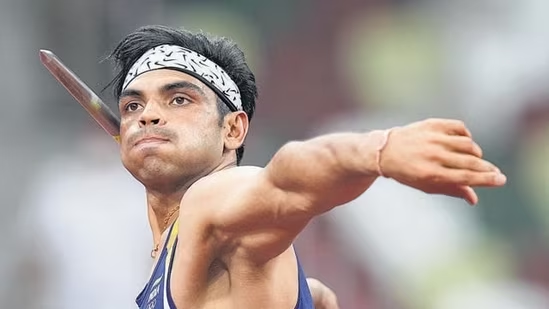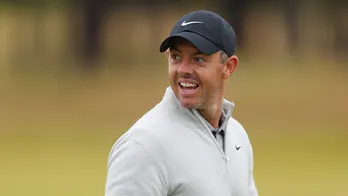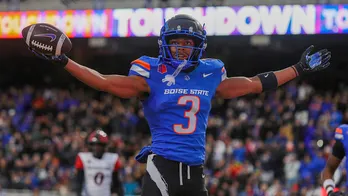Here’s how Chopra will “restart” for a cramped 2022 season
Neeraj Chopra has spent the past few weeks at the National Institute of Sports Patiala trying to tune his body and clear his head. From the post-Tokyo craziness and from what’s happened to his life. To once again reorient the athlete inside him and hit reboot. “You like the rebooting, like the metaphor from the computer?” says Dr Klaus Bartonietz. “But no, this is not the computer thing. It is the human brain, it goes step by step, you starting to run, you starting to jump, to do excercises and get your muscles working again. It’s a restart, ja.”  PREMIUM
PREMIUM
Bartonietz is the German javelin guru and biomechanics expert who has worked with Chopra since 2018. He is the man Chopra turned to acknowledge after his second gold-nailer of a throw in Tokyo. This week, Bartonietz returns to Patiala, after a few months home and speaking at the World Javelin Conference in Kuortane, Finland where he presented a talk titled, “It's all about the bow”, which forms the basis of his javelin philosophy—the use of the body as the bow that releases the arrow/ javelin. “Dhanush” as he gleefully utters.
“To improve”
The plan that Bartonietz, Chopra and his JSW Sports team will put together now involves getting Chopra ready for a cramped competition calendar that turns athletic peak cycles into steep roller-coaster rides. Chopra’s biggest event will be the World Athletics Championships (July 15-24 in Eugene, USA) followed by defences of his Commonwealth Games (July 28-Aug 8, Birmingham, UK) and Asian Games (Sept 10-25, Hangzhou, China) titles. Before the worlds, he is expected to turn up at smaller warm-up competitions plus a Diamond League event in Doha.
The season ahead will be upon him faster than imagined, given that its less than eight months for the worlds.
“This year there are more competitions than before but how much you choose matters,” Bartonietz says. This is technically athletic off-season, but Chopra’s Olympic gold medal wiped out the rest of his season. A specially calibrated training calendar for 2022 becomes vital. There is a plan to have Chopra move overseas, away from the glare and distraction of India’s non-stop hosannas. JSW head of sports excellence & scouting Manisha Malhotra lists South Africa, Turkey or the US as training base options. Chopra should ideally be out of the country from November until end February.
ALSO READ| What's next for Tokyo Olympics gold medalist Neeraj Chopra? | Watch
Bartonietz is trying to keep expectations and excitement down. His first assessment on return to India as a part of Team Neeraj will be his physical state. The first reckoning will come on the weighing scale, “you will see if he is 88kgs or if its 95kgs, if he is overweighted a bit our training will correct it easily.”
Then his biomechanist’s eye will study the subject “from feet to core to shoulder.” He wants to use the months ahead with a solitary goal: “To improve. If in 2016, he threw 86m, then he throws over 87m in 2018, it’s time to throw over 90m. A good javelin thrower is 80m, it’s 85m for the very good but 90m...that’s the greats, the cream.”
This is not progress one centimetre at a time, it’s finding the perfect sync of mind and body—maxing the javelin thrower’s "neuro-muscular potential"—to aim at progress by scale.
While the number may indicate an end, it is not, Bartonietz says, at the heart of the training that is to follow. The focus there “is on just preparing well. The numbers will come. What if he throws say, 89.95m? The 90m is also an orientation.”
The best javelin throwers, says Bartonietz, pile experience and memory onto their biomechanical parts in their run-up, “every year, you know better how the athlete reacts, the athlete understands their body better. Actually, with the years, the athletes should be getting better, despite the fact that they are getting older, which is not an easy thing. When you want to throw further, you have to be faster, you have to be stronger, you have to be more flexible, everything should be bit by bit.”
You begin, Bartonietz says, by realising that now, “you should not do too many things that are not directed into the javelin.” So, while flexibility is a great thing, spectacular videos of bending backwards with a medicine ball in hand are an absolute no-no. “That big bend, the centre of that bow” Bartonietz says, “is the lower back. That is not what you need in the javelin throw. That is a critical point of your back, a lot of injuries happen there. You may not feel anything when you are 22-23 but when you are older, it is counter-productive.”
“Like a movie”
Bartonietz calls the hullaballoo post Tokyo, “like a movie.” His voice puffs out in what can only be called indignation, “All this Instragram stuff… no, no. We do a job, we are not playing around with this nonsense. This is distracting people. You should be learning more and not distracting more.” He is confident that despite everything, Chopra knows what to do. “He knows he cannot drift away. He is not changing, he is not becoming another person.”
We will only hope, because India has never had an athlete like Chopra. He has no footsteps to follow, from now on, his will either be emulated or symbolise trip wires. But Chopra has always talked of not letting his Olympic gold drag him down. On return from Tokyo, he swore he would hang it on his wall at home and move on.
Malhotra describes Chopra as “self-motivated”, and says that today “there is a sense of urgency” around the months ahead, “that Neeraj knows better than us.”
It will make Bartonietz happy, because to him, “the athlete must always know what he is doing.” Independence of mind is usually not encouraged in Indian athletes, but you cannot argue with someone who has an Olympic gold. Who knows, Chopra’s legacy could actually extend beyond gold. It could detach the Indian athlete from the cloying guru-shishya always-supplicant parampara. Bartonietz cites a Chinese proverb that Indian coaches need internalise, “We are teacher, we open the door, you must enter yourself.”
Experience unrestricted digital access with HT Premium
Explore amazing offers on HT + Economist Start 14 Days Free Trial Already Subscribed? Sign In
Disclaimer: The copyright of this article belongs to the original author. Reposting this article is solely for the purpose of information dissemination and does not constitute any investment advice. If there is any infringement, please contact us immediately. We will make corrections or deletions as necessary. Thank you.







